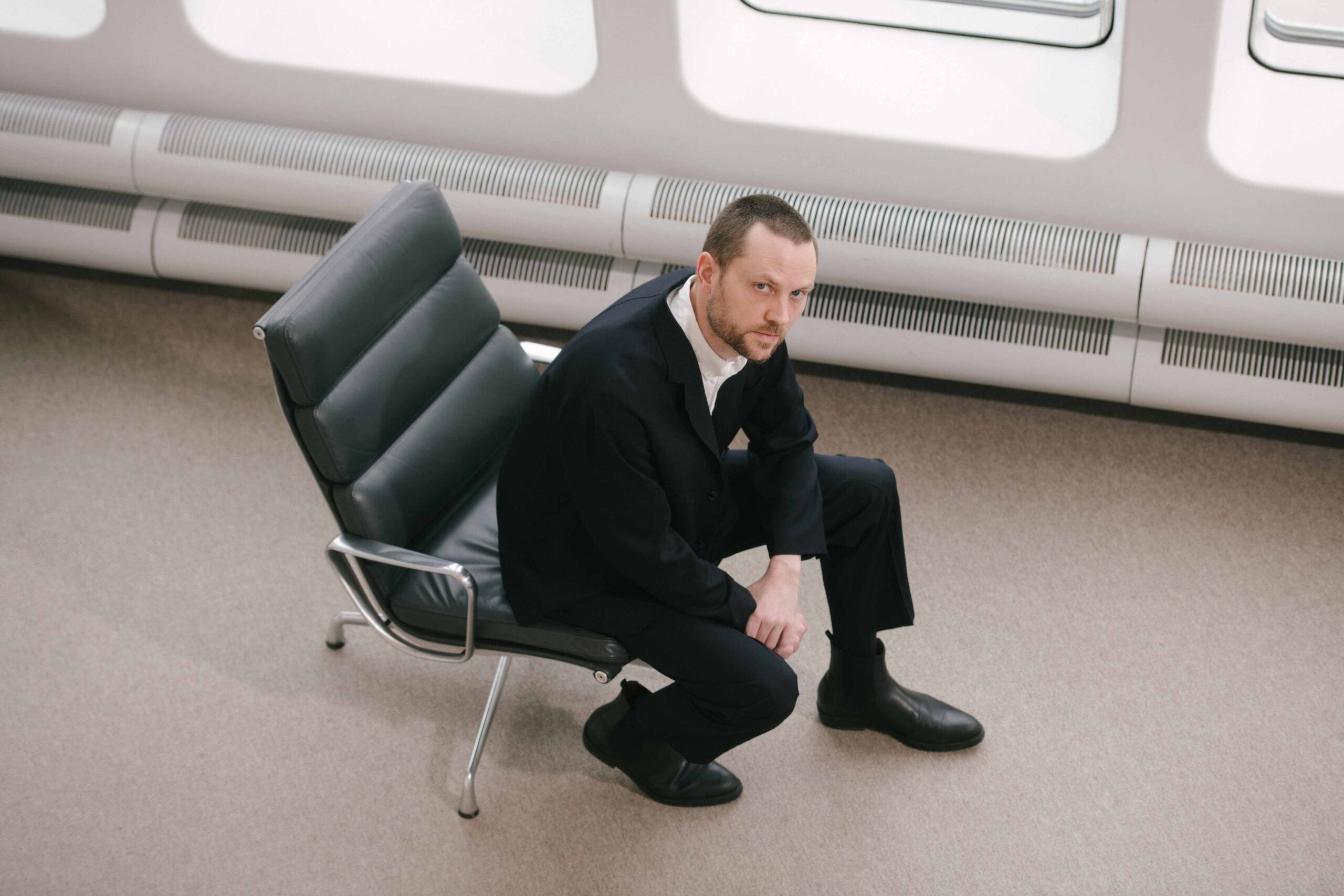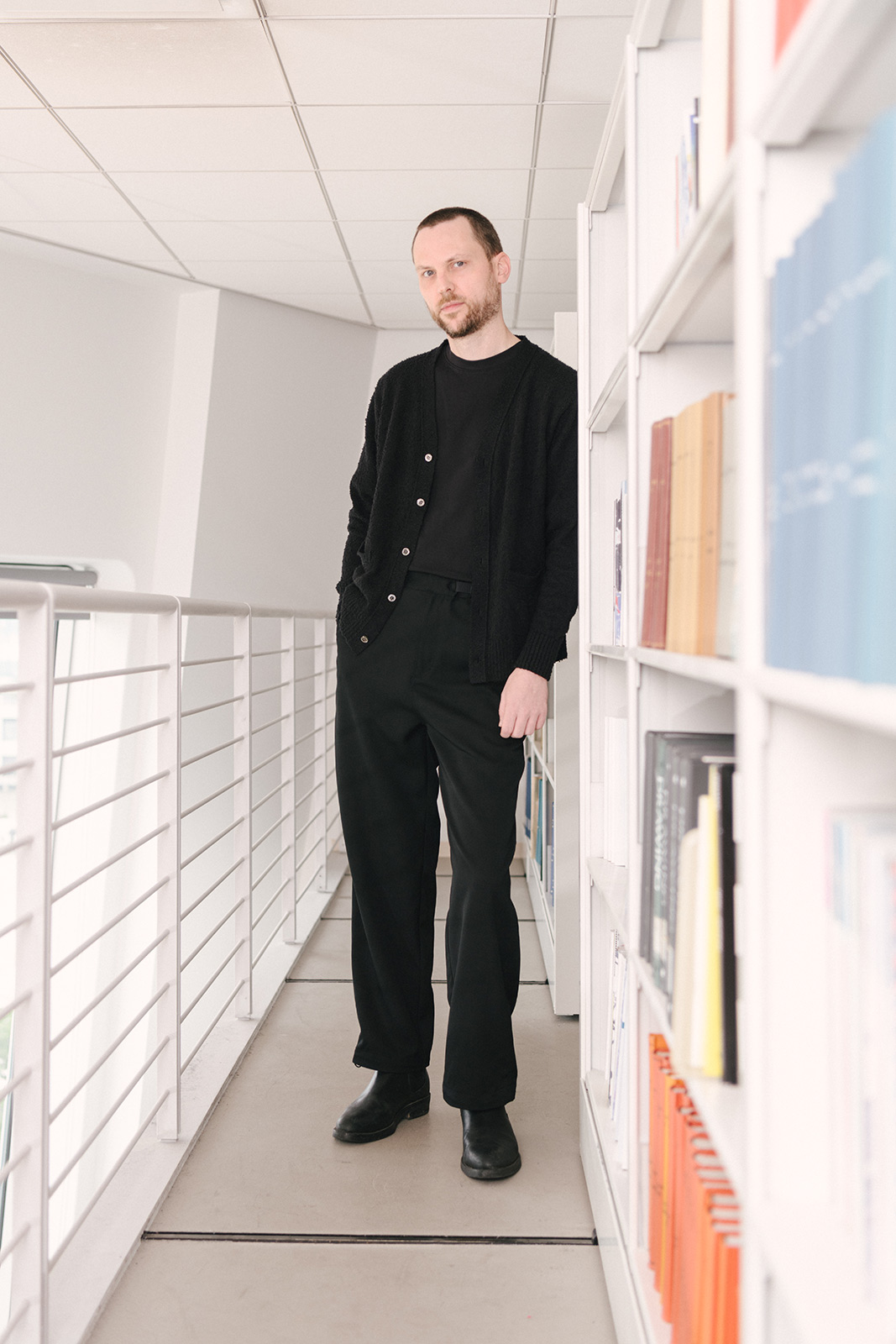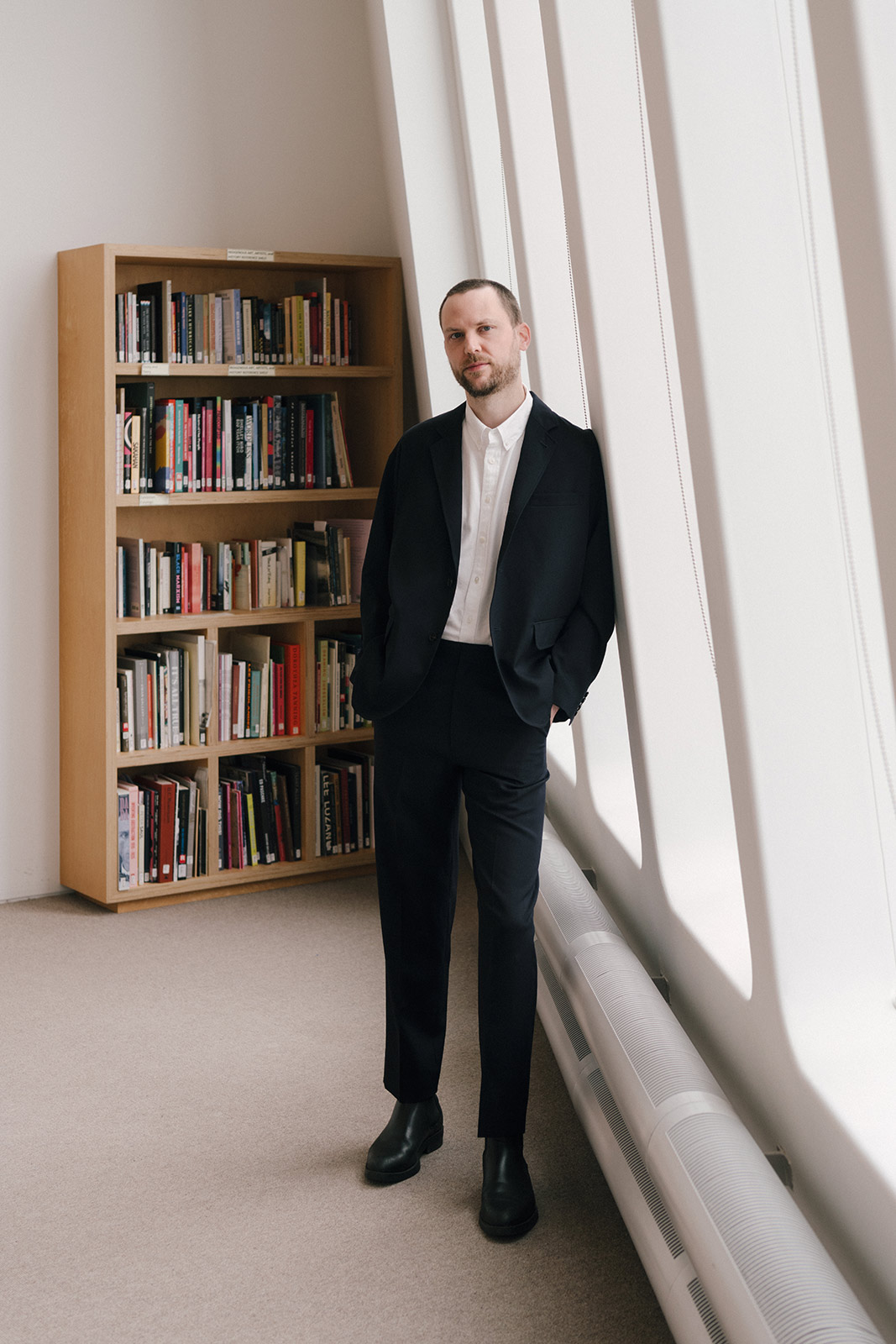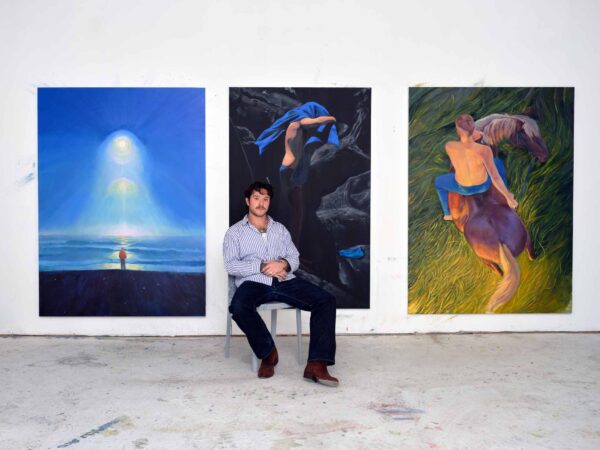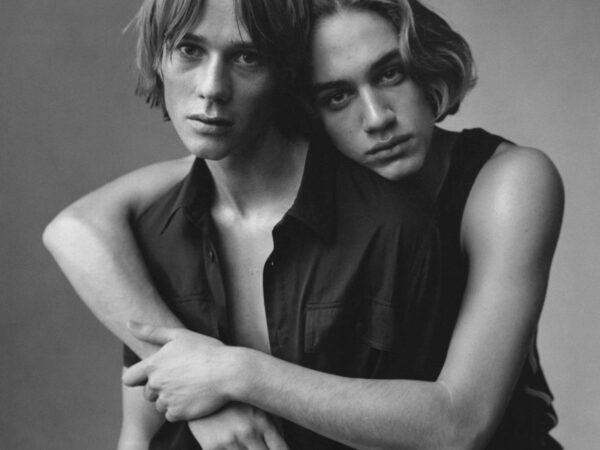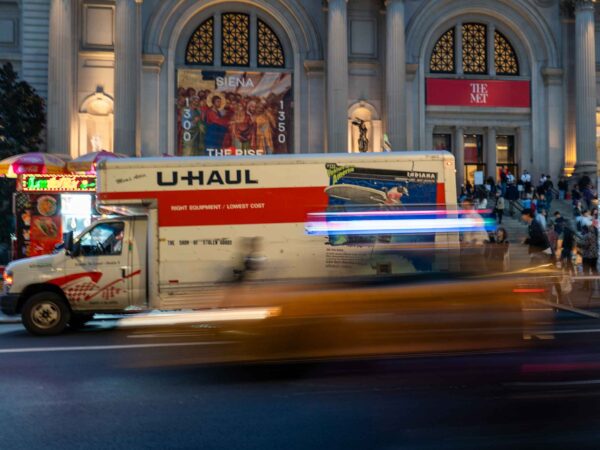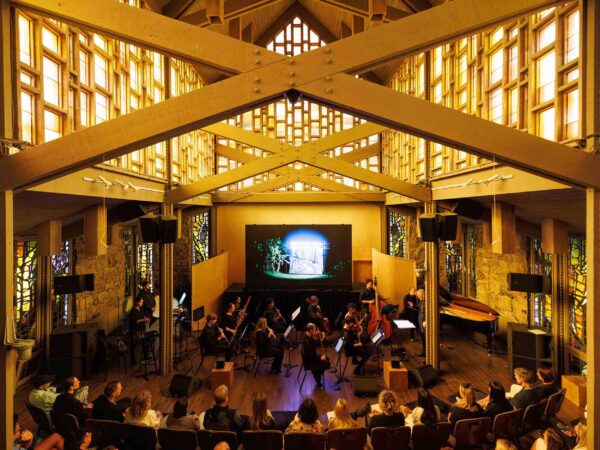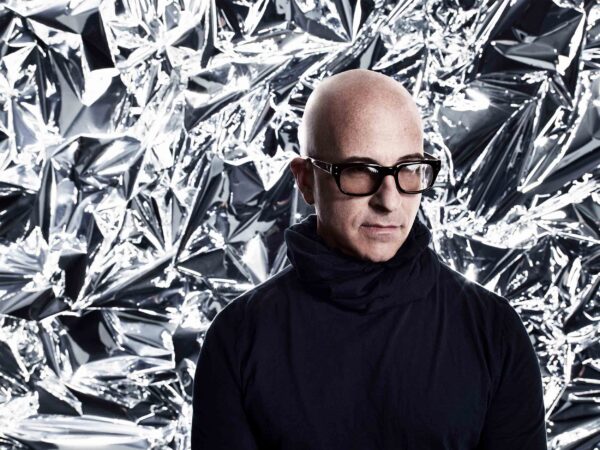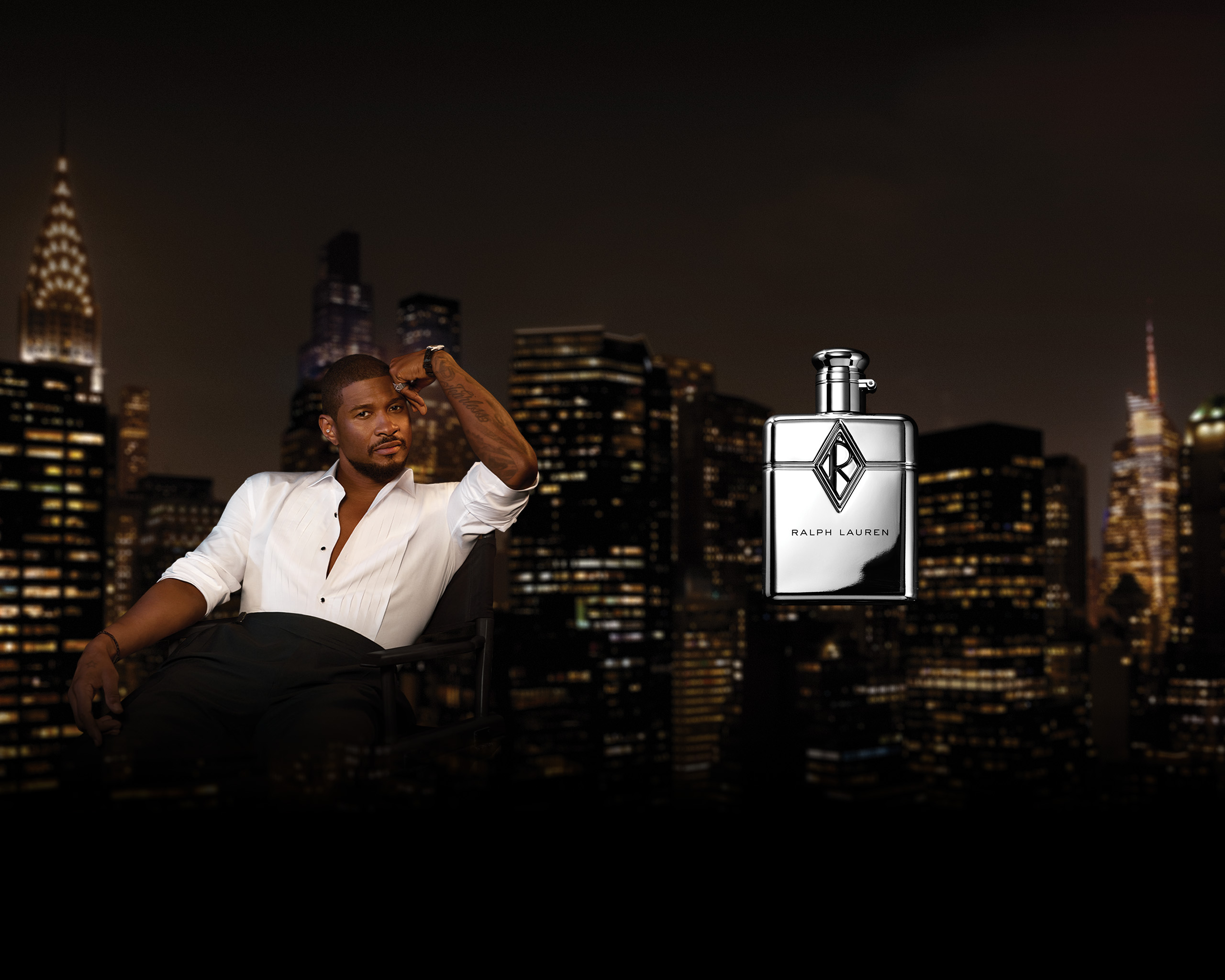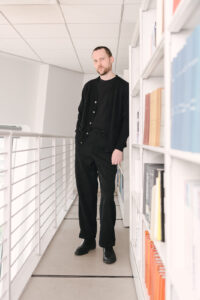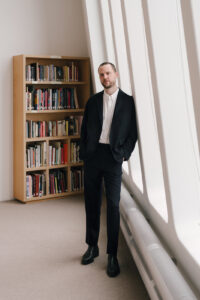For the third installment of Document’s series, Whitney Museum of American Art's Sondra Gilman Curator of Photography Drew Sawyer carries the ethical responsibilities of narrating the past
How can an archive be both a record of its time and a living organism shaped by its histories? In an era when contemporary culture tends to privilege immediacy, the archive offers resistance by inviting slowness, friction, and a longer view. In this three-part series, Document turns to curators Ruba Katrib, Jovanna Venegas, and Drew Sawyer, photographed on location, wearing Vowels, the brand that finds its own voice through archival research. Each of these curators places the archive at the center of their practice. Whether rooted in institutional holdings, collective memory, or ephemeral traces, their work reflects a broader shift in curatorial thinking: one that treats the past as a fragile and potent tool, open to reinterpretation.
There was no specific formative experience that shaped Drew Sawyer’s curatorial journey. “I’ve always just been an archive nerd,” he says. “Even as a child.” Though an art history major, his approach to academia and curation takes cues from anthropology, an element that invites audiences to consider the broader impact of art on humanity. Since leaving the Brooklyn Museum—where he staged the much-lauded Copy Machine Manifestoes: Artists Who Make Zines in 2023—he joined the Whitney Museum of Art as its Sondra Gilman Curator of Photography. Currently, he and co-curator Marcela Guerrero are gearing up for the 2026 Whitney Biennial.
In his practice, Sawyer treads a careful line between honoring the authenticity of an object, while finding its meaning in the canon of history amid shifting perspectives. To present an archive as both an emblem of a specific time, but also a step in what was to come. This challenge—perhaps Sawyer’s greatest skill—is a balancing act, one that acknowledges the fragility and incomplete nature of archival items, but sees their monumental strength as a whole. It requires a deep attention to detail to catalogue all that is said and unsaid, and hold both in equal measure.
Can you recall a moment when archival research shifted your thinking or changed the trajectory of an exhibition?
So many of my exhibitions, or the questions I want to pursue in an exhibition, begin with archives—either something I’ve come across while looking through an archive or something that seems like an omission in “The Archive”. So, archival research has often shifted or prompted an exhibition in many different ways. One example would be my exhibition Jimmy DeSana: Submission. Finding evidence of DeSana’s participation in correspondence art networks in the archives of other artists like Ray Johnson really shifted how I framed DeSana’s work—not just during the early 1970s when he was mailing his photographs to other artists or contributing to zines and correspondence art but also his entire trajectory and artistic practice.
How do you navigate the tension between archival preservation and curatorial intervention?
Being a curator is not just about organizing exhibitions but also, of course, about caring for objects. So there’s often a tension between those two aspects of the job. But this often feels particularly heightened around archives because they are often more fragile and less frequently exhibited. Whenever possible I prefer to be able to present actual objects rather than facsimiles even though it’s more practice because I don’t want to create a false dichotomy or hierarchy around the original of an artwork and archival material. However, this can be challenging, especially when dealing with libraries and archives, which are often less equipped to handle loan of objects and are also more focused on preservation rather than exhibition.
Do you see your work as rewriting history, or simply rereading it?
I think I see these as the same. I’m usually just trying to intervene in a contemporary discourse by reframing the past, so it’s always as act of rereading and rewriting.
What responsibilities do you feel toward the individuals or communities represented in your archival work? How do you approach curating artists or subjects whose legacies were overlooked, erased, or marginalized?
I’ve often organized exhibitions that include archival material related to individuals or groups who have been overlooked from dominant histories of art or scholarly studies all together. For me, permission is always essential. For example, for Copy Machine Manifestoes: Artsits Who Make Zines, my co-curator and I made sure that every artist or zinemaker we included was okay with their material being included within the context of the show and the institution, given that many of them intentionally had an anti-institutional stance. In the end, nobody said no because I think we approached the material with sensitivity by visiting dozens of archives and interviewing hundreds of people.
Have you ever questioned whether it was your place to tell a particular story? How did you navigate that?
As the often quoted phrase goes, “The past is a foreign country.” I think we all have to approach the narrating the past with certain ethical responsibilities that also acknowledges our own motives, even if one feels they have more of a right to it than others.
Do you ever think of an exhibition as a form of speculative fiction? A rewriting of what could have been?
I think whenever one is dealing with history and/or archives there’s an aspect of speculation and rewriting from one’s own perspective and moment in history. It’s good to acknowledge that from the beginning, both to oneself as well as audiences or readers.
Finally: when you imagine the future of archives, what do you hope they hold?
As we’re running out of space for physical archives, I think we’ll be increasingly focused on digital archives—both digitizing physical things as well as preserving the digital. This will become important within the context of AI and datasets or context, which will bring a whole other set of issues.
Vowels, the made-in-Japan designer label operating between Tokyo and New York, grounds its design philosophy in rigorous archival research. Creative Director Yuki Yagi formalized this commitment by transforming the brand’s New York flagship into an active site of inquiry—a hybrid space that functions as both retail environment and living research center. Central to this vision is the brand’s “research library,” a curated collection of books, periodicals, and printed ephemera that inform and contextualize Yagi’s creative output.


